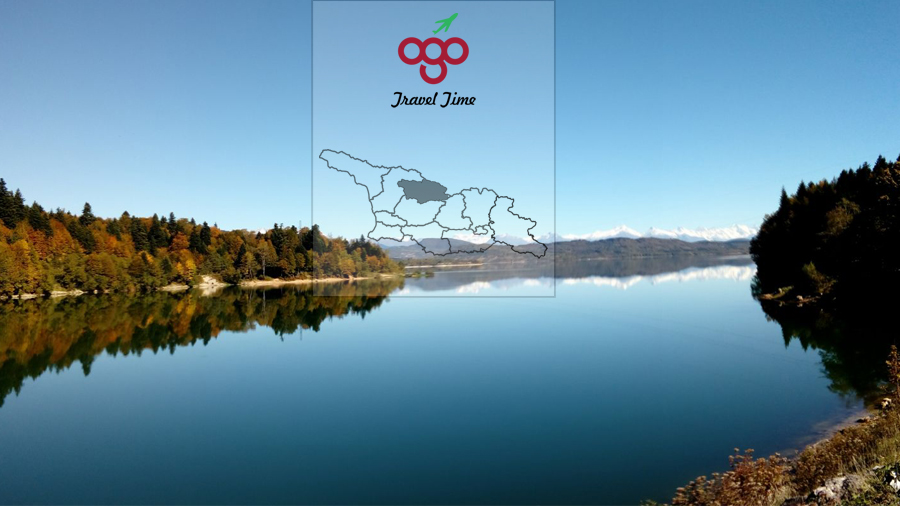
Racha-Lechkhumi
Racha is a special, completely unspoiled and beautiful place high in the mountains, boasting a landscape of mountain forests and high alpine meadows. The lowlands are covered with forests of beech, pine and spruce trees. For visitors to the region, Racha is a giant outdoor playground. With raging rivers, the region is popular with anglers and rafters, as well as mountain bikers and paragliders. The source of the mighty Rioni River is full of trout and is a haven for fishing, whitewater rafting and kayaking. But Racha also contains some remarkable cultural treasures, with churches and monasteries dating back to the middle ages. No visit to Racha would be complete without sampling the local delicacies. The smoked ham of the region, “Lori”, is famous throughout Georgia and Racha’s most precious export is its rich red wine, Khvanchkara, said to be Stalin’s favorite. This fruity red grows in only one tiny village, making it highly precious, and as it does not travel well, it really has to be tasted close to home.
ADVENTURE
The spectacular mountains of the Racha-Lechkhumi region are rich in nature and provide plenty to see and do. The mountain area is covered with lush green forests and wonderful rivers, so trekking and rafting provides wonderful views and sights. Keen climbers will have plenty of challenges on Mount Khvamli and Lechkhum while rafting on the River Rioni is a special treat. Or, try horse riding deep into the forests.
WINE
The Racha-Lechkhumi region is the motherland of two of most luxurious and highly priced wines in Georgia. The Usakhelauri grapes are grown on the mountain slopes near the villages of Okhureshi, Aubi and Isunderi. These grapes are quite scarce and only a limited amount of land is available, producing just three tons of grapes each year, making them highly prized. Khvanchkara is a red wine made from the Alexandrouli and Mudzhuretuli grape varieties cultivated in the Khvanchkara vineyards, near the town of Ambrolauri. It is one of the most popular Georgian wines and a visit to a family owned wine cellar is highly recommended.
CULTURAL HERITAGE: WHAT TO SEE AND DO
Many of Racha-Lechkhumi’s churches and monasteries date back to the middle ages.
During the 13th century, the Church of Archangel and temple were built in the ancient village of Khotevi, a significant trade centre.
Nikortsminda Church (10th century)
Nikortsminda Church is located in the village of Nikortsminda, near Ambrolauri. With its impressive decorations, there is nothing else like it in Georgia. The temple, built in the name of St. Nicholas the Miracle-Worker, contains many examples of old Georgian script and the interior walls of the temple are painted with frescos dating back to the 16-17th centuries. These paintings were ordered by a local noble, Tsulukidze, and prepared by the painters of Gelati. In 1534, King Bagrat III renovated the temple but it was significantly damaged during an earthquake in 1991 and re-opened in 1997.
Barakoni Church of the Virgin is located in the village of Tsesi. The Church was built in 1753 by the master Avtandil Shulabvreli upon the request of Rostom, the Prince of Racha. The church’s facade includes good examples of 18th century engravings.
In the vicinity of Tsageri, you’ll find the ruins of the medieval fortress of Muris-Tsikhe, which may have been the place of exile and death of the Christian theologian Maximus the Confessor (c. 580-662). A monastery dedicated to St. Maximus still exists in the vicinity. According to medieval records, the Khvamli caves, located nearby, preserves the treasury of the Kings of Georgia and is listed among the national monuments of Georgia.
Nakuraleshi, Church of St. George
The Church of Saint George in Nakuraleshi, located in the mountain village of Lechkhumi, is a typical example of rural chapels in the Georgian highlands. But what makes it unusual is that both the interior and exterior walls have been covered in 17th century murals.
This beautiful museum houses several collections of artifacts found locally. They range from the Stone Age through the Middle Ages including architectural details and relief fragments from St. George and Holly Trinity churches dating back to the 10th century. Coins from the 5th century as well as the remains of ancient settlements give a fascinating insight of the cultural life in ancient Georgia. The museum is completed by its collection of 20th century paintings from the region.
RESORTS
Located 1,050 metres above sea level, the village of Utsera is known for its mineral water, health resort and spa. The village boasts a fine collection of medieval churches, but its 800-year-old “alley of trees” is especially worth a visit.
Shovi is an important health resort. Visitors enjoy its mountain climate, nature and mineral waters. The resort is located at the base of the Mamisoni Mountain range and is surrounded by snowy mountains.
Ghebi village is 1,350 metres above sea level and can trace its history back thousands of years. Bronze belts and the head of a silver bull have been discovered in burial mounds from the Bronze Age, 3rd-1st century BC Archaeological excavations have also revealed metal work from the 16-10th century BC as well as burial mounds from the late Bronze Age. Ghebi was a unique tower settlement in Racha, but most of the towers have been damaged by earthquakes, and today only a few remain.
Chiora is one of the most beautiful villages in Racha. It is located 1,360 meters above sea level, on the south slope of the main Caucasus Mountain range. During medieval times it had a large population and a number of defensive structures. Today, a number of towers and two small churches still remain.
Bardnala is a small village in Lechkhumi, made famous by the poems written by Lado Asatiani, a well-known Georgian poet. Asatiani’s home in Bardnala has been preserved as it was when he lived there in the early 20th century – complete with engraved balcony, wooden stairs, roof-tiles and a pretty garden. The housemuseum contains a permanent public display of artifacts from the poet’s life. Every summer Bardnala holds a special celebration, Ladooba, dedicated to the poet.
©GEORGIAN NATIONAL TOURISM ADMINISTRATION
